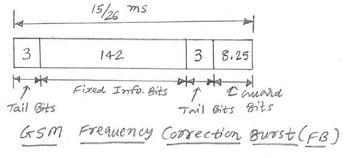Frequency Error in GSM: An Essential Overview
Advertisement
Frequency error measurement in GSM is a critical process, vital for ensuring transmitted signals are precisely aligned with the specified frequencies needed for reliable communication. GSM operates on defined frequency bands, and deviations can degrade signal quality, cause interference, and impact network performance.
Let’s dive into the details of frequency error measurement in GSM.
What is Frequency Error in GSM?
- Frequency error is the difference between the actual carrier frequency of a transmitted signal and the nominal frequency assigned by the GSM system.
- GSM requires both mobile stations (MS) and base transceiver stations (BTS) to transmit at exact frequencies to maintain synchronization and avoid interference.
- Exceeding the frequency error threshold can cause communication issues, including reduced signal quality, dropped calls, and interference with neighboring cells.
Why is Frequency Error Measurement Important in GSM?
- Maintains Signal Quality: Accurate frequency alignment ensures clear voice calls and reliable data transmission by reducing noise and interference.
- Prevents Interference: By minimizing frequency error, GSM operators avoid overlapping with adjacent channels or cells, preventing co-channel and adjacent-channel interference.
- Ensures Network Synchronization: Frequency precision is necessary to keep the network synchronized. Frequency drifts can cause devices to lose synchronization, impacting handovers and call continuity.
- Complies with GSM Standards: GSM standards set limits on permissible frequency errors. For example, the frequency error should be in the range of +/-0.1 ppm for all bands except GSM 400. GSM 400 has a frequency error requirement of +/-0.2 ppm.
How is Frequency Error Measurement Conducted?
- Measurement by Base Stations (BTS): BTS continuously monitors the frequency accuracy of signals received from mobile stations, ensuring devices remain within frequency tolerance limits.
- Measurement by Mobile Stations (MS): The mobile station also measures the frequency of signals transmitted by the base station to synchronize its own transmission frequency accordingly.
- Automatic Frequency Correction: If a frequency error is detected, mobile stations can use an automatic frequency correction feature to align with the correct frequency.
- Control Channels: Frequency error measurements are often conducted over specific control channels (e.g., Broadcast Control Channel or BCCH) to verify alignment with the system’s assigned frequencies.
Frequency Error Tolerance in GSM
According to GSM standards, frequency tolerance depends on the device type and operating environment:
- For Base Stations: The frequency error should generally be within +/-50 Hz for GSM 900 and GSM 1800 bands.
- For Mobile Stations: The frequency tolerance is typically +/-100 Hz for GSM 900 and GSM 1800, and it varies slightly for other frequency bands.
The frequency tolerance allows for minor deviations without impacting network performance. However, if errors exceed these limits, corrective measures or recalibration are necessary.
Measurement Equipment and Tools
- Spectrum Analyzers: Used to measure the frequency of transmitted signals, providing precise measurements of deviations from the expected frequency.
- Network Monitoring Tools: These tools help operators continuously monitor network-wide frequency errors to detect and correct anomalies in real-time.
- Drive Testing Equipment: Mobile frequency error measurements can also be taken using drive test tools that analyze signal quality and frequency alignment across different locations.
Impact of Frequency Errors
- On Call Quality: High frequency errors can lead to degraded audio quality in voice calls due to signal distortions.
- On Data Transmission: For data services, frequency errors can introduce errors in data packets, resulting in lower data rates and higher error rates.
- On Handover Performance: Frequency errors can disrupt handovers between cells, causing dropped calls and failed data sessions.
- On Battery Life: Mobile devices with high frequency error might consume more power as they attempt to re-synchronize with the network, reducing battery life.
Summary
In GSM, frequency error measurement is essential for ensuring that mobile stations and base stations stay within defined frequency tolerances. Accurate frequency alignment prevents interference, maintains call quality, and ensures efficient handovers. By continuously measuring and correcting frequency errors, GSM networks can provide consistent, high-quality service across all cells and coverage areas.
Advertisement
 RF
RF

